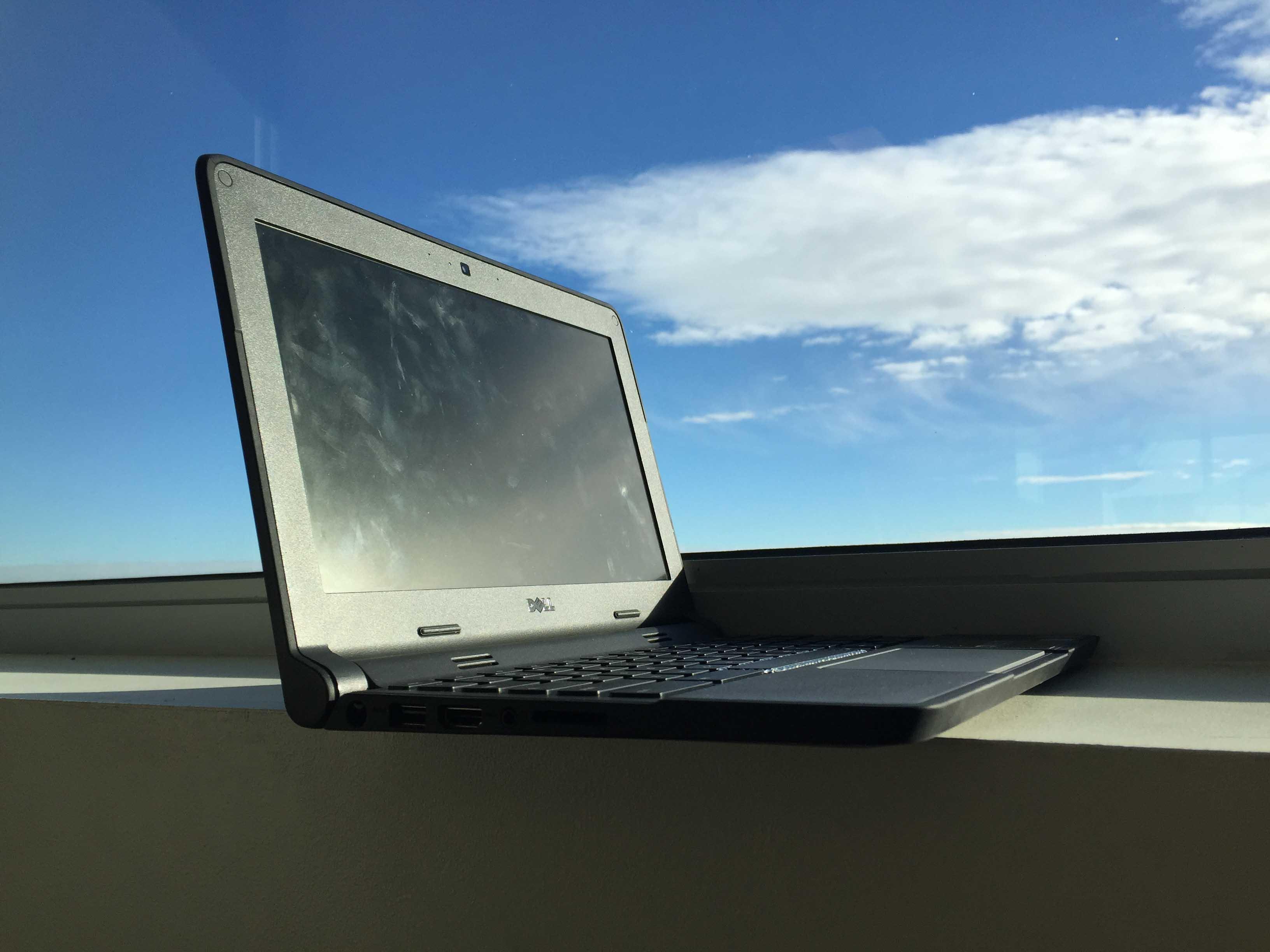Broomfield’s Future Looks Chrome
December 8, 2015
Nearing the end of October, the freshmen class of BHS gathered in the Eagle Gym as “418 Chromebooks were deployed in less than 20 minutes,” Mrs. Davidson said. At $265 per-chromebook, including the BVSD management software, this was a sizeable investment for the district. The initial funding was provided from the Zayo Group’s excess wireless network space, which BVSD rented out and utilized the profit for this endeavour. Students had to pay a mere $25 fee upfront to receive their device.
As online educational tools and lessons have become omnipresent in today’s schooling, BVSD is striving to improve the technology readily available to its schools. Broomfield has been chosen as the second pilot school for the 1:Web program rollout of chromebooks for freshmen, Centaurus being the first.
The 1:Web program is not just limited to the supply of Chromebooks for students; it is “an initiative that aims to connect students to the world online through any device,” according to IT Ed Tech BVSD. This program highlights successful educational use of technology and focuses on widespread internet access, which is the reason Boulder Valley adopted this idea and initially started implementing Chromebooks into pilot schools.
“For the next four years, including this year, all of our freshmen will be issued Chromebooks, […] we have funding to do that. So what happens after four years? We don’t know yet,” Mrs Davison said.
For a complete distribution of Chromebooks to all schools in the district it would take well over $2 million dollars. However, for just the high schools in BVSD, it would take around $800,000, which is a more attainable goal. Thus, by observing how the implementation of the Chromebooks in the chosen pilot schools has been handled, the district is able to, as Mrs. Davidson said, “see if they can launch on a bigger level the following couple of years.”
Overall, freshmen have been more or less responsible with their Chromebooks in the classroom. They did have to go through an online citizenship training concerning responsible use and care for their devices. However, Mrs. Davidson said, “We have had some different obstacles, like for example, students streaming Netflix the entire day […]. Now, our next challenge is how do we manage the chromebooks and learn how to use them in the classroom?”
Not long ago, cell phones and their use in classes was the technological enigma teachers attempted to solve, and, subsequently, most find themselves better prepared for dealing with new technological advancements, like the use of Chromebooks for academic purposes. Language Arts teacher Mrs. Peter said, “I have a pretty strict rule about putting phones away, and so I think by getting them ready for the phone thing, if I say put your chromebooks down […] I don’t think I have that many issues.”
Chromebook recipients have been inclined to treat their devices well since they will be allowed to keep them for the future. As a result, there have only been six broken screens so far, although one was broken only seven hours after their distribution. Each screen individually costs $75 to replace.
Some students without a need for another computer can still appreciate and utilize their devices. Freshman Jonathan Morrison, who is used to his Mac computer, said, “They’re not my favorite thing in the world […], but I think it’s a useful tool and it was 25 bucks for a computer; I figured why not.”
There is no doubt this huge technological innovation is a much needed step for furthering online advancement and development in the increasingly cyber-curriculum. The next wave of students will certainly have access to the technology they need to be successful in the modern era, which was the initial goal for the district. With the ever-increasing online presence of the world, it is time students jump on board as well.





